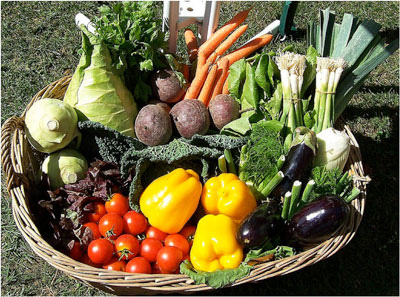- Home
- Raw Food Recipes and Resources
- The Benefits of Real Food
The Benefits of Real Food
By Carly Schuna
Fresh, pure, real food is important. How important?

To Rejuvenative Foods, it’s important enough that the company’s CEO, Evan Richards, personally reviews and discusses with me every recipe and article that I write. He wants his customers, whether they are devoted raw foodists or people trying to eat healthier, to have the highest-quality information and the best products available.
Evan isn’t the only one. Although a myriad of processed products line supermarket shelves across the nation, there is plenty of evidence that eating real, fresh, pure foods is better for your body, better for the environment, and better for your wallet. It’s a refrain that high-profile, scientifically minded food writers like Michael Pollan and Mark Bittman have been singing for years, and it’s a concept that is catching on more and more with the mainstream populace.
Tips for Saving—Time, Money, and Health
A few challenges involved are time, cost, and convenience. For many people, making food is intensive when focusing on pure, natural items. Sprouting grains, soaking dry beans, dehydrating produce, and blending together nut and seed butters and milks takes time and planning, which are hard to come by when you lead a busy life.
But taking part in the process from beginning to end, growing or creating your own food, and arranging your kitchen space in a way that makes you happy are all parts of what’s fun about making your own food. Preparing natural, organic meals from scratch means you’re in control, which is both liberating and satisfying.
If money is tight, there’s no question that you can save by eating in more often and preparing most of your food from scratch (1). Even buying prepared single ingredients, such as pre-sliced vegetables and raw nut and seed butters, will cost less than buying fully prepared meals. Whereas a deli sandwich might cost $6, a $23 jar of fresh, raw almond butter from Rejuvenative can make about 20 generous sandwiches—a significant savings per meal.
With the proper equipment—be it a juicer, food processor, dehydrator, or other tools—you can also ensure that your prep time is quick and efficient. If you eat conventional foods rather than organic, you can save time by purchasing pre-sliced vegetables or fresh produce from farmers’ markets. Savings will also trickle back to you when you buy foods such as grains and beans in bulk.
Even more significant than monetary savings are the health benefits of eating real, pure, organic foods. In almost every instance, you’ll consume less sodium and fat and fewer calories in a home-prepared meal than you would in a restaurant meal (2). You can minimize the pesticide residue that you’ll ingest, and your food won’t be genetically altered.
Preparing meals at home also allows you to exercise greater control over what you eat and follow a specific diet plan. You can regulate portion sizes, incorporate low-fat or low-sodium substitutes, and build your own daily menus. You can even reduce your cancer risk with the foods you choose (3). And if you’re concerned with processed or altered substances in your food, you can buy from companies like Rejuvenative, which uses only pure, unprocessed, organic, and non-GMO ingredients.
Think you’re too busy, too poor, or too picky? Try an experiment of preparing more fresh, pure foods for just a week or two. Keep track of how much you spend and how healthy you feel, and notice the difference—it just might be profound enough to convince you that real foods are the way to go.
References
- Quigley, Delia. “8 Benefits of Home Cooking.” TLC Cooking. http://recipes.howstuffworks.com/8-benefits-of-home-cooking1.htm (2012)
- Barston, Suzanne with Maya W. Paul and Melinda Smith. “Healthy Weight Loss & Dieting Tips: How to Lose Weight and Keep It Off.” HelpGuide.org. http://www.helpguide.org/life/healthy_weight_loss.htm (2011)
- Szabo, Liz. “Health Experts Recommend That Good Home Cooking.” USA Today. http://www.usatoday.com/life/lifestyle/2004-05-05-home-cooking_x.htm (2004)

